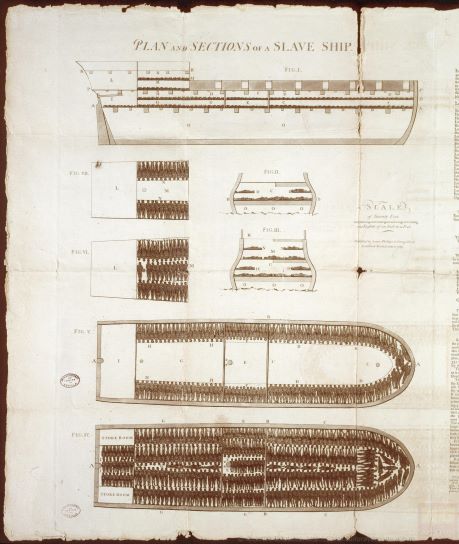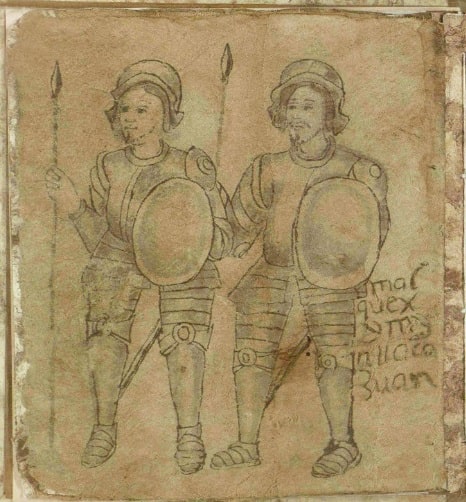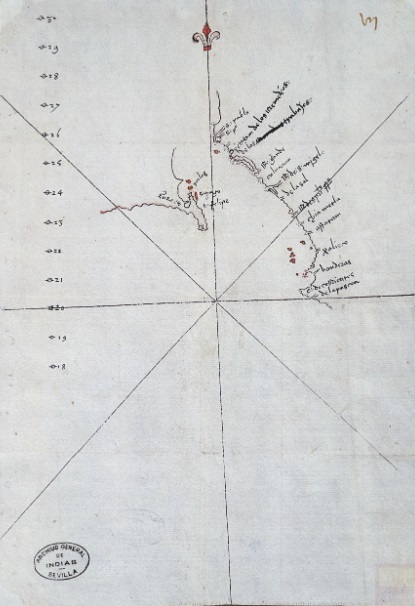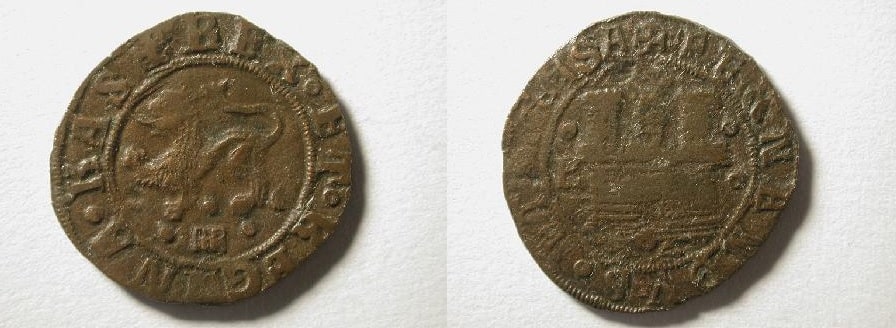Everyday life. Elevation and floor plan of the corral of La Montería, located in the Real Alcázar of Seville, where comedies were performed.
Siglo XVI
Representation of cochineal cultivation and production. The image shows a picture of a cultivated cactus, where the mealybug has swarmed well.
The image depicts the plan and section of a ship engaged in the black slave trade. The document is written in English and published in London.
Anonymous Aztec standard-bearer figurine made ca. 1519 in volcanic stone, used during ceremonies. Museum of Fine Arts, Houston.
Spanish soldiers advancing across the Americas, despite notorious opposition from the belligerent Aztec people and the military alliances won by Cortés. Archivo de la Nación, Mexico.
Map of the New Land of Santa Cruz, at the southern tip of California, discovered by Hernán Cortés in 1535.
Fleece coin of 2 maravedíes of the Catholic Monarchs. Museum of Segovia.
The Catholic Monarchs receive the Christian captives after the capture of Malaga, coinciding with one of the final chapters of the peninsular conquest. Painting by Eduardo Cano de la Peña in 1867. Seville Museum of Fine Arts.
Graph showing the evolution of Castilian guard payments in 1523 and 1524
Graph showing the evolution between 1575 and 1599 of deaths and baptisms in the parish of San Salvador de Villafáfila (Zamora)










